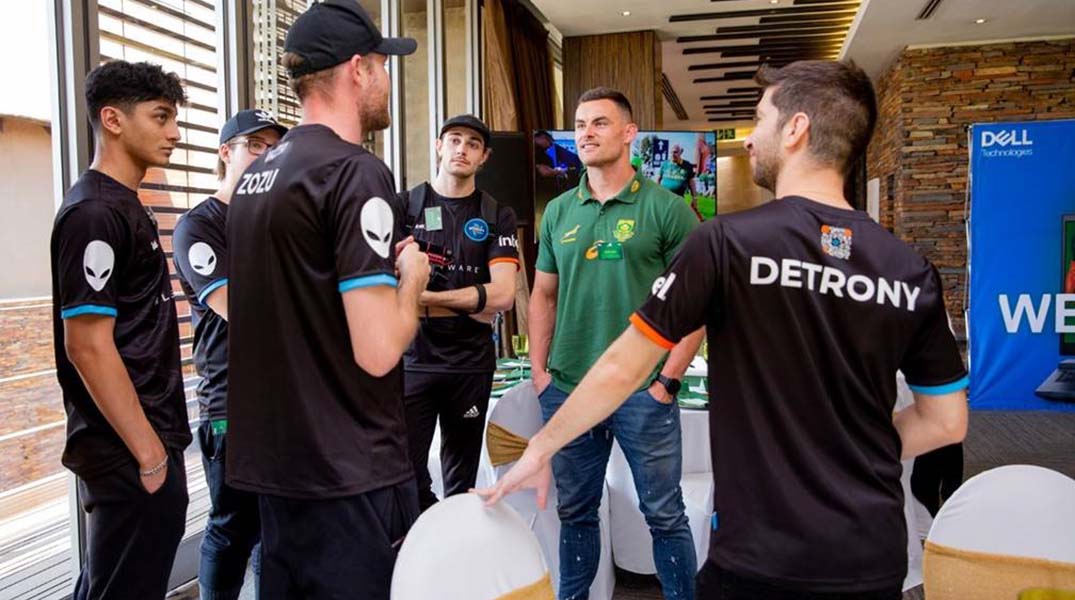Simply generating a conversation around competitive gaming can help your school get on track to be a game-changer, but make sure to set out a strategy and get buy-in from stakeholders.
By Chris Buchanan, client solutions director at Dell Technologies South Africa
As one of the fastest-growing industries in history, it’s no surprise to see esports interest skyrocketing in schools. In fact, the rise of esports is now strongly on the radar for many educational administrators at both high school and university levels.
Esports is a highly-collaborative, educational and engaging activity and schools want in. Educators are eager to leverage esports programmes to create compelling new academic experiences and unique opportunities for students to develop real-world skills while still in school. In South Africa, more and more institutions are embracing esports as part of their curricula to harness its potential to teach scholars mental toughness, leadership skills, sportsmanship and communication skills.
Tristan “Zozu” Rens, Bravado Gaming’s GM, says: “Traditionally, sport has played an important part in schools and universities. As the professionalism of esports and the impact of the industry continues to grow, schools and universities can play a vital role in helping nurture the next generation of professional esports athletes while simultaneously helping further legitimise esports’s place in the wider sporting world.”
When starting out to build an esports programme, the path forward can be unclear. Here is a list of findings to help schools get started:
Start the conversation
The first step in starting an esports programme is to start asking questions and gauge interest. The best place to begin is with the students. Consider polling the student population to understand how the programme might add value.
Explore the industry of esports – understand how it’s being used locally and globally, who the players are and why esports is of interest to them. Use findings and survey results to extend the discussion to school board members, administration, faculty and other community leaders. Consult with the IT department to understand the technical requirements, including what types of gaming stations, network, infrastructure and supporting technology might be needed.
Broadening the scope of the conversation to nearby schools as well as local esports leagues and organisations will help chart a course for the success of the programme by looking to them to provide helpful lessons learned and tips for moving forward.
Map out a strategy
Use the research to define goals and establish requirements to get started. Start planning with four key areas in mind: academics, logistics, technology requirements and financial considerations.
Look to answer basic operational questions like how many students will be accepted into the programme, which games they will play and what other supporting roles the programme will require (shoutcasting, analytics, video/production, etc.).
“Oftentimes the students wanting to get involved have been involved in esports titles before and have insights that could be overlooked or difficult to research. Getting buy-in from these passionate students in forming a strategy for any esports ventures will be hugely beneficial,” says Emma-Leigh “EmmaD1lemma” Hoyle from Bravado Gaming.
When identifying academic goals, be prepared to show what new academic areas of study will be added, and what career and technical education pathways will be associated with it. Unlike some other extracurricular programmes, esports has an entirely unique application to STEAM (Science, Technology, Engineering, Arts and Mathematics) education.
Identify regulatory and compliance requirements, such as South Africa’s Cybercrimes Act, and incorporate policies to promote good user behaviour, digital citizenship and sportsmanship. Many schools have opted to incorporate existing policies for activities such as maintaining attendance requirements.
When mapping out technology and financial plans, remember that while some schools may be investing heavily in esports facilities and equipment, there’s often no need for a high up-front investment. Define the minimum requirements and do what is feasible with existing resources, including the use of volunteer coaches, computer lab equipment and talented student interns.
Get buy-in
Support needs to come from the parents, faculty, administration and school boards. It’s essential to show the reality of what esports has become: challenging, educational and a heavily engaging team-building activity.
When approaching key decision makers, focus on how these programmes are empowering young people with skills that translate across STEAM disciplines, as well as business, health and wellness, marketing, finance and design. Likewise, these programmes open the doors to several new academic areas of study and research, such as design theory, to introduce into the school’s curriculum.
For students aiming to continue studies in growing technology and science career fields, esports scholarships are starting to be launched in South Africa. Further, esports is providing access to state-of-the-art technological tools, and helps foster lifelong skills such as critical thinking, collaboration, teamwork and good digital citizenship.
Esports is also bringing together students like never before. For fringe students that haven’t participated in extracurricular activities, esports programmes finally provide a reason to get involved with their school and community. Along the way, they learn strategic thinking, social skills, and how to manage success and failure.
No matter how you look at it, esports is having a tremendously positive impact on students, schools and communities. It will be exciting to see what comes next as esports continues to transform from what was once just an enjoyable pastime into something far greater: a gateway to students’ promising, technology-enriched futures.
Featured picture: Jesse Kriel, Springbok’s Utility Back and Bravado team discussing gaming tips

